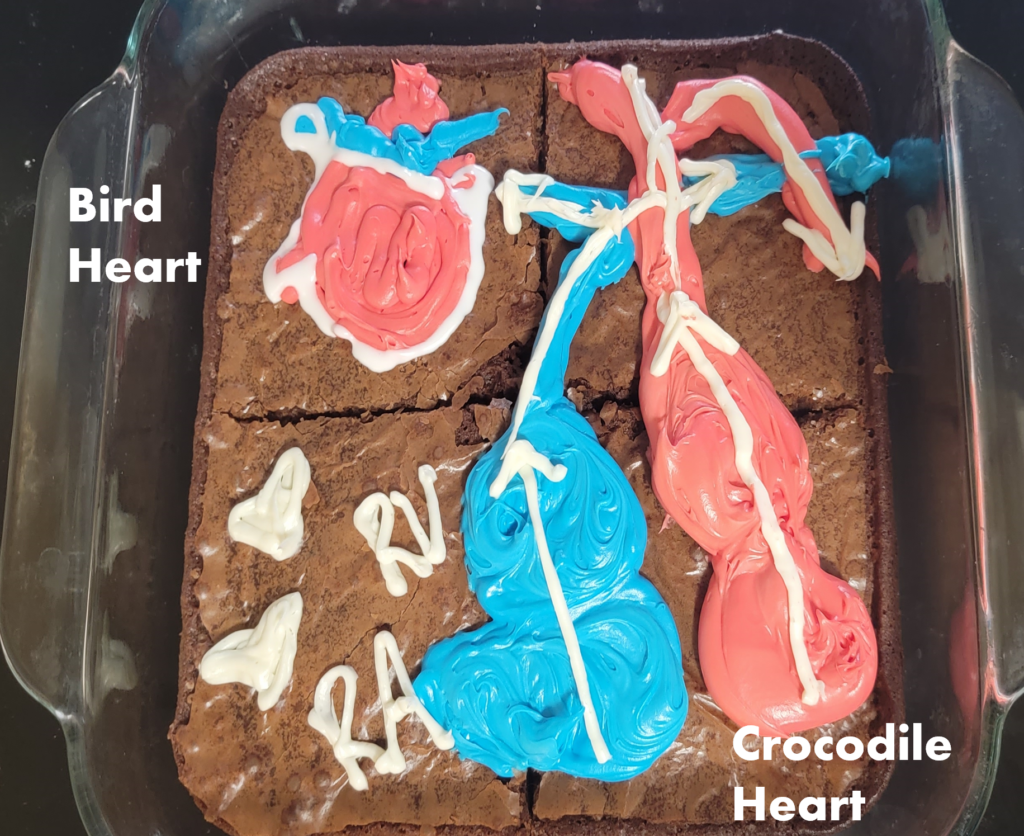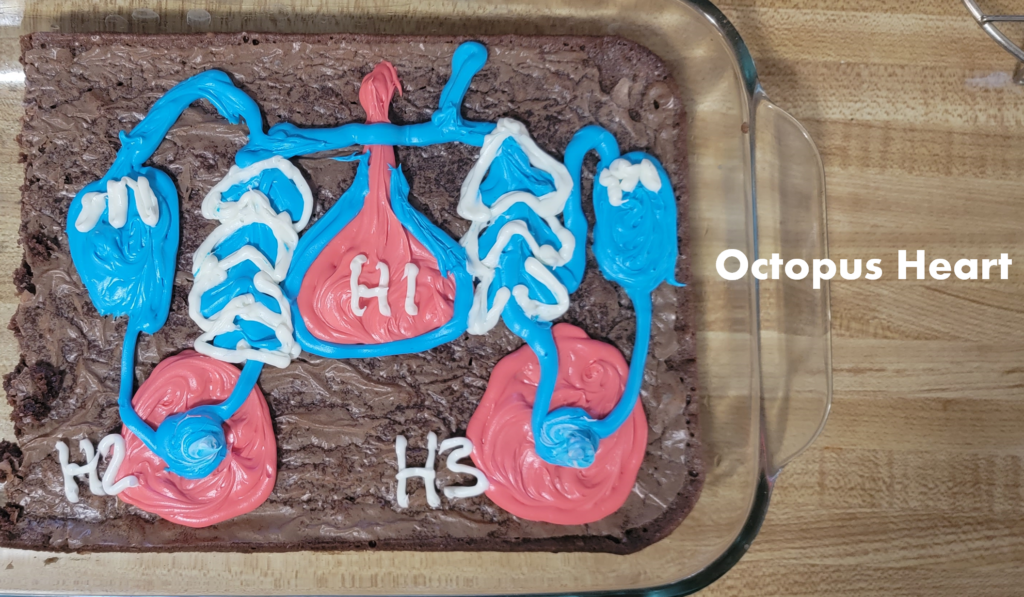For this project, Max and I looked at different hearts of different animals and compared how they evolved to look different, but form similar functions. Here we made Brownies, and iced them with the different heart structures. Each heart is unique in its own way and can have either four chambers, three chambers or two chambers, unless of course you are an octopus in which there are three hearts.

Above is a Bird heart and a Crocodile heart. The two hearts function similarly, and have four chambers, however with the Crocodile heart, has an interesting heart as when the crocodile is diving, blood flow changes, and one vessel that takes oxygenated blood to the rest of the body becomes deoxygenated blood to the heart.

Above is the Human heart, Fish heart and the Amphibian heart. Here, we have the Human heart which is four chambered. The Fish heart is two chambered, and the Amphibian heart is three chambered. The Amphibian heart does often have a hard time though, with mixing of oxygenated and deoxygenated blood within the ventricle that pumps blood out to the rest of the body. The human heart is the most complex heart of the animal kingdom having four chambers, divided by a septum. The human heart is also tilted slightly to the left inside our body.

Above is the Octopus heart. The Octopus actually had three hearts (labeled H1-H3). Two of the hearts work to move blood beyond the gills, while the third keeps circulation flowing for the organs. The heart actually stops while the octopus is swimming, which is why often we see Octopi crawling rather than swimming as swimming tends to exhaust them.
The objective covered that this project intends to go in great depth on is comparing and contrasting hearts in the animal kingdom. In order to go into more detail than what was covered in lecture this project will be illustrating the specific anatomical difference observed between the hearts of fish, octopus, frog, human, crocodile, and bird.
To begin the journey to the modern human heart, we must start with the protozoans, which compose the foundation for the tree of life approximately 3.8 billion years ago. We can then journey up the tree of life to the first multicellular organism containing a primitive coelom approximately 800 million years ago. From then we move onto Ecdysoa and Deuterostoma, two organisms belonging to the phylum Bilateria, containing the first peristatic tubular heart with a single contracting mesoderm layer (Bishopric 2005). This heart likely contained a single trabeculated ventricle and a single atrium evolved later to form a resemblance of the modern fish heart (Jensen et al. 2013). This peristaltic heart soon underwent a rapid structural diversification that led to the hearts aspects of the modern heart we see today including a conduction system, unidirectional circulation, etc. (Bishopric 2005). This rapid diversification was primarily due to the ancestral network of genes associated with the ancient heart structure that expanded through the addition of new genetic networks and gene duplication (Olson 2006). As a result, the primitive heart previously described underwent a rapid evolution leading to a two-chambered heart with one atrium and one ventricle in the gnathostome fish; to a three-chambered heart with two atria in amphibian tetrapod’s; to a four chambered heart in crocodiles, alligators, birds and fish (Stephenson et al. 2017).
